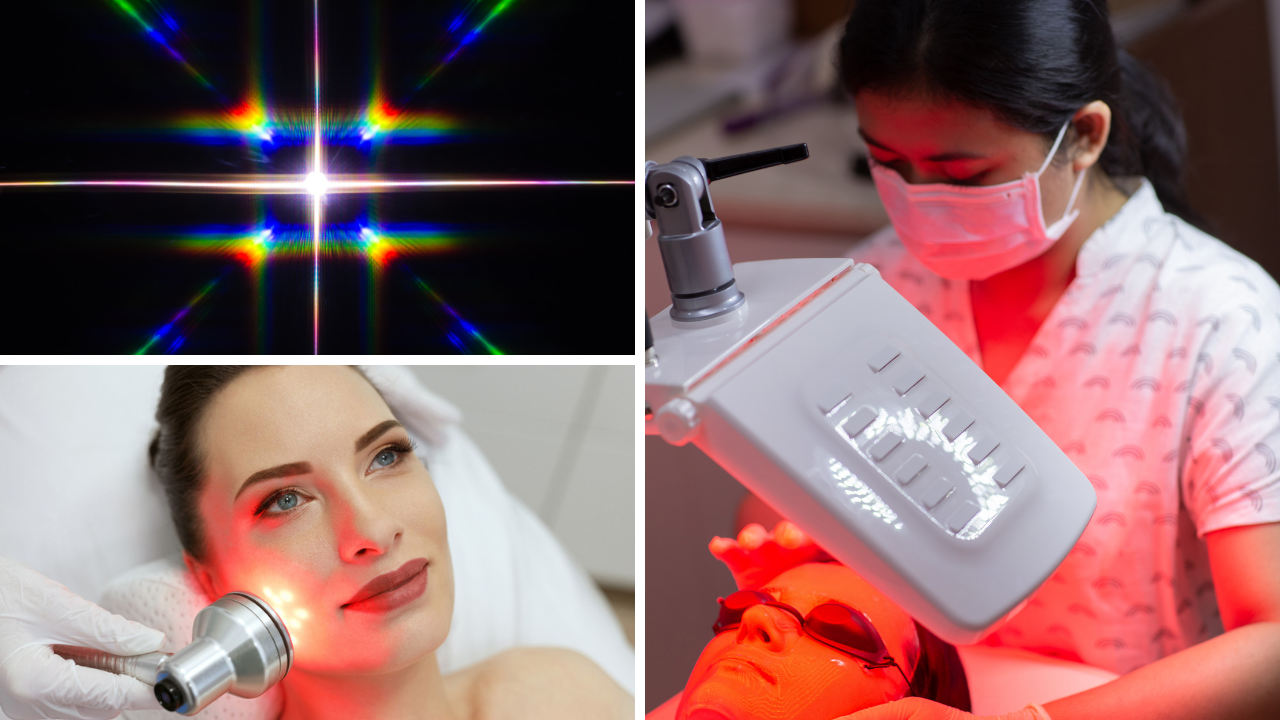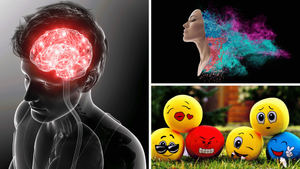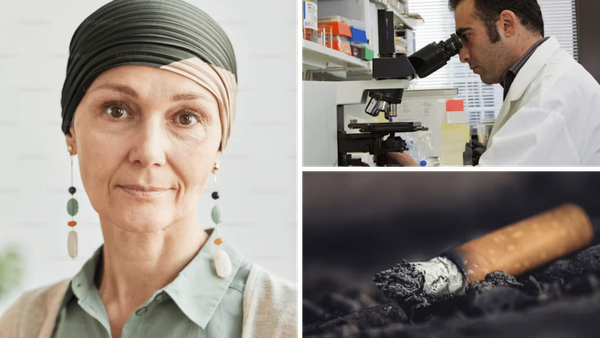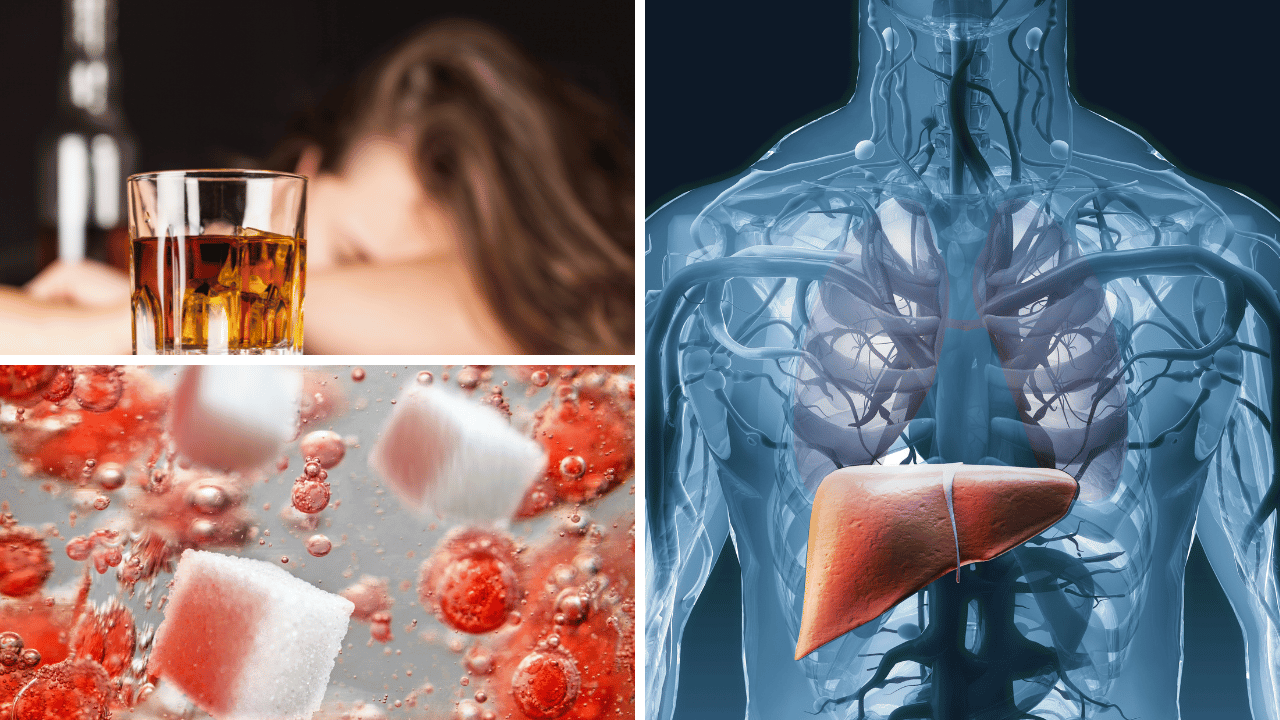Red light therapy ("RLT"), also called low-level laser therapy, is rapidly becoming one of the most popular treatments for a variety of ailments, from skincare to hair growth. Using specific wavelengths of red and near-infrared light, it's capable of penetrating the body several millimeters below the surface, resulting in powerful healing benefits. Its applications are wide-ranging, with some studies even suggesting that red light therapy can help relieve joint pain and improve mood. In this article, we'll explore the science behind red light therapy and look at its potential benefits and uses.
Definition & History of Red Light Therapy
Red light therapy is based on the science of photobiology, the study of how living cells interact with electromagnetic radiation (light). The practice of light therapy dates back to the 1890s. More recently, advances in light therapy can be attributed to Hungarian scientist Endre Mester. In 1967 Dr. Mester discovered Low-Level Laser Therapy, abbreviated as "LLLT." He further developed LLLT using red light, which has a longer wavelength (630-700 nm). As Dr. Mester continued his research, he recognized the potential therapeutic value of RLT while working with laboratory mice. Following his experiment, it wasn’t until 2003 that further research was conducted and involved humans. Since then there have been countless studies conducted that provide evidence for the effectiveness of RLT as a therapeutic approach for many conditions.
Overview of current research on the uses of RLT
Current research primarily focuses on RLT's ability to stimulate cellular processes and promote tissue repair, alleviate inflammation, and reduce oxidative stress. Red light therapy is being used successfully to treat everything from musculoskeletal pain and joint inflammation to skin conditions including acne, rosacea, and wrinkles. Its effects are also being tested in areas such as depression treatment and sports health recovery and performance enhancement.
In fact, according to the PBM Foundation, there are approximately 189 active clinical trials underway involving RLT. Examples of the areas of study include preventing cancer therapy side effects, pain management, reducing Opioid use, and wellness and aging.
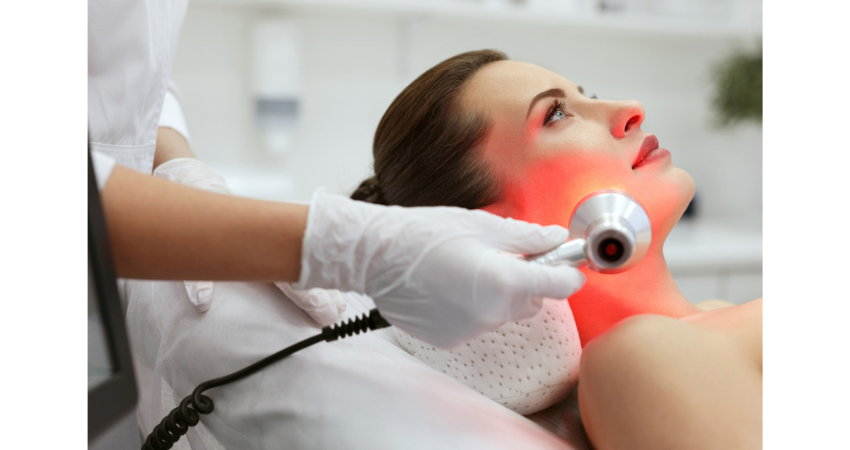
Health Benefits of Red Light Therapy
Red light therapy has gained increased attention as more and more people have become aware of the potential health benefits of frequent, low-level exposure to the near-infrared light spectrum. In simplest terms, red light therapy is a form of photobiomodulation ("PBM") in which specific wavelengths of red and near-infrared light are used to interact with cellular structures, resulting in physiological changes that improve or enhance therapeutic effects.
Red light therapy works by stimulating the activity of mitochondria, which are responsible for generating energy in cells. This increased activity produces more ATP (energy molecule) which can be used by the body’s tissues to heal itself. The red color of the light helps stimulate collagen production while its longer wavelength penetrates deeper into the skin’s layers providing greater penetration. This type of healing modality is believed to increase energy levels and reduce inflammation by stimulating the body’s natural healing processes.
Red light therapy is increasingly being explored as an effective technique to benefit a variety of bodily systems. Promising results include improved circulation, enhanced energy levels, a faster wound-healing process, and decreased inflammation - all great benefits when it comes to sports injuries! Additionally, indications show increased collagen production for skin health; better sleep patterns; stronger immune system functioning; reduced oxidative stress effects on the body cells, and visible improvement in acne symptoms.
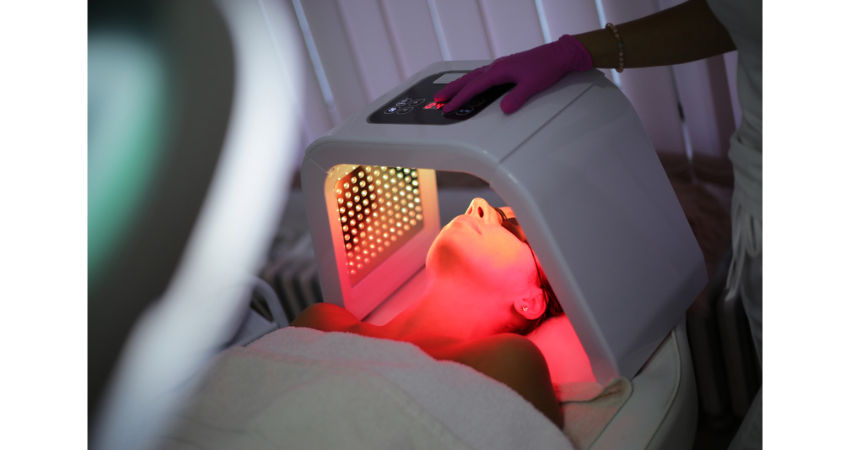
Reducing Pain with Red Light Therapy
Red Light Therapy has been found to reduce pain in conditions such as arthritis and fibromyalgia. RLT works by using low-power laser therapy ("LLLT"), which can penetrate deeper into tissue than traditional light sources, so it can target the root cause of chronic pain effectively.
The intensity of the red light beam is measured in joules per square centimeter (J/cm2). This technology has been studied extensively, with evidence showing that it can reduce inflammation, improve blood flow, and stimulate tissue regeneration, including hair growth.
Additionally, research suggests that RLT can offer relief from joint pain associated with osteoarthritis and fibromyalgia. While no single treatment can address all types of pain, RLT is an effective tool for treating painful conditions and reducing symptoms for many individuals.
Applying Red Light Therapy for Optimal Wellness
Red Light Therapy is becoming increasingly popular for its range of therapeutic benefits. It harnesses the power of natural sunlight and converts it into a specific wavelength of red light that can be used to improve skin health, reduce inflammation, and promote overall wellness. In everyday use, it is often found in tanning beds or spa treatments.
In the medical setting, red light therapy machines are becoming more commonplace due to their ability to aid recovery from injuries, promote better sleep patterns, and stimulate the production of collagen and elastin in aged skin. Additionally, many physical therapists are using this type of therapy to help patients with flexibility and mobility issues. Red Light Therapy may be just what you need to get your optimal level of wellness!
Examining the Impact of Red Light Therapy on Overall Wellbeing
While the research on the efficacy of red light therapy is still emerging, it shows promise as a natural health supplement with few side effects. However, it is important to note that there are potential risks associated with overexposure, such as skin irritation or eye damage. Therefore, it is advisable to consult a healthcare professional before beginning any red light therapy regimen.
Ultimately, if used correctly and in moderation, red light therapy has the potential to improve overall well-being and should be considered alongside more traditional treatments for various health conditions.
Here's What We Know for Sure
Red light therapy is an innovative, non-invasive treatment that has a growing list of applications. With further research, it could become the primary form of medical treatment in a wide range of areas. The potential benefits it holds are numerous and its application will likely expand in the coming years. So far, red light therapy has had excellent results in many different areas such as pain relief, wound healing, and skin rejuvenation. As such, it is increasingly being used by healthcare professionals to treat some of their patients’ conditions.
The science behind RLT is sound. Its safety and effectiveness have been proven in countless studies and clinical trials. It is even being used as an alternative to more traditional forms of medical treatments like surgery or medication. This gives patients an option with fewer side effects and less downtime from recovery.
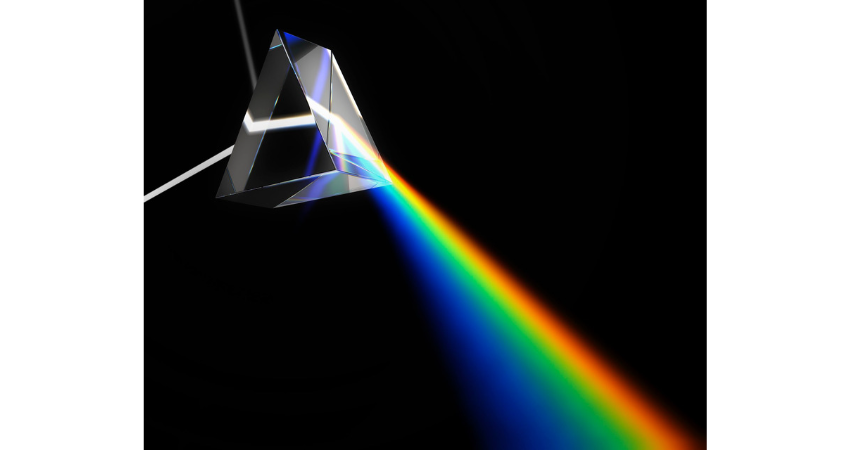
The future of red light therapy looks bright as researchers continue to explore the possibilities for how it can be used to improve human health. We are likely to see even greater advancements in this field over time with new discoveries about its therapeutic benefits. It could be especially helpful for those with chronic illnesses or injuries since it offers them safe alternatives to existing therapies which may carry greater risk or cause more side effects.
Overall, red light therapy holds tremendous promise for improving our physical well-being and helping us all live healthier lives. With proper care and caution, we can harness the power of this treatment to provide safer, long-term solutions that improve our quality of life without sacrificing efficacy or safety.

Red Light Therapy- FAQs
When was red light therapy first studied as a medical treatment?
Red light therapy (or photobiomodulation) first began to be studied as a medical treatment in 1967, when researchers found that certain wavelengths of red and near-infrared light had regenerative effects on cells. Studies have since been conducted showing the positive effects of red light therapy for a variety of ailments, from pain relief to depression.
Is red light therapy FDA-approved?
Red light therapy is a type of phototherapy that uses low-level laser (light) therapy (LLLT) to improve health and treat a variety of skin ailments. The FDA has approved the use of low-level laser and LED systems for treating wrinkles, acne, and psoriasis. It's important to note, however, that not all types of LLLT are currently approved by the FDA.
What are the pros and cons of red light therapy?
Red light therapy is becoming more and more popular in the beauty industry. It's a natural and non-invasive form of treatment that helps to stimulate collagen production, reduce acne, promote healing, and reduce inflammation. Pros include painless treatment, no downtime after treatment, found to be safe for all skin types, and visible results are available quickly. Cons include potential skin sensitivity, inconsistent results depending on individual cases, heat sensitivity in some cases, and cost since treatments typically need to be repeated.
Is red light therapy just LED?
No, Red Light Therapy is not simply an LED light. Although LEDs are a common form of red light therapy, the technology used in RLT goes beyond typical LEDs to utilize multiple wavelengths including near-infrared and blue light optimized for healing and rejuvenation. By combining these wavelengths with specific treatments like pulsing and varying frequencies, RLT is highly effective at stimulating cell recovery and regeneration.
What is the difference between RLT and near-infrared light treatment?
Red light therapy is a method of using red and near-infrared light to improve the health of your skin, tissue, and cells. Infrared radiation is a type of energy that can be used for healing but isn't visible to the human eye. Red light therapy uses wavelengths between 630nm - 880nm to stimulate regeneration in the body, while infrared radiation is 800nm - 1mm in length. Both deliver therapeutic benefits however, red light therapy is more targeted and efficient than infrared radiation.
What are the benefits of blue light?
Blue light has a variety of potential benefits. It can help with circadian rhythm regulation, improve alertness and boost mood, reduce age-related eye conditions, aid in regulated melatonin production, and encourage vitamin D production in the body.
Can red light therapy reduce belly fat?
Yes, red light therapy can help reduce belly fat. Red light therapy acts by causing the release of hormones that boost metabolism and helps break down body fat. It has been proven to be effective in reducing waist size and promoting healthy weight loss.

What does red light do to your brain?
Red light therapy has been found to have a positive effect on brain function. Studies suggest that red light therapy can improve mood, reduce stress and anxiety, improve cognitive functions, increase alertness and concentration, and even protect against neurological disorders. Additionally, red light is thought to help stimulate the release of hormones associated with improved brain health.
How long does it take to see results from red light therapy?
Red light therapy can produce visible results in just a few days. Most people experience some benefits within the first week, while full effects may take up to 8 weeks of regular treatments, depending on the condition being treated.
How often should I do red light therapy?
Red light therapy is most effective when used regularly. For optimal results, treat yourself to a session of 15 minutes up to three times a week. It helps to have consistent exposure to the wavelengths of red and near-infrared light for maximum benefits.
Who should not use red light therapy?
Red light therapy is not recommended for those with sensitive skin, as it may increase the risk of discomfort and irritation. People who are pregnant or take certain medications should also avoid this treatment as there may be adverse interactions with the medication or the unborn baby. Lastly, those with autoimmune diseases should consult with their doctor before using red light therapy.
Should you wear goggles in red light therapy?
Yes, always wear goggles during red light therapy. The eyes are particularly sensitive to red and infrared light, so goggles are crucial for protecting your vision. Make sure the goggles have an appropriate filter level for the wavelength of red light you're using.

What are the side effects of red LED lights?
Red LED lights have been known to cause eye strain, headaches, and sleep disruption. In some cases, prolonged exposure to red LED light can lead to vision problems such as retinal damage and photophobia. It is advised to avoid looking at bright red LED lights for extended periods of time and seek medical attention if any of the above symptoms occur.
Is there a risk to red light therapy?
Yes, there is a risk associated with red light therapy. Prolonged exposure to certain wavelengths of red light may not be safe for individuals with certain medical conditions, and it can cause unnecessary stress on the eyes. It's always best to consult with a qualified healthcare professional before beginning any type of holistic healing regimen.
Is red light therapy good for inflammation?
Red light therapy has been found to be effective in reducing inflammation and swelling. Studies suggest that it can help reduce joint pain, accelerate wound healing, and lessen inflammation in the tissue. It is a safe and natural form of treatment with no known side effects.
Is it OK to do red light therapy every day?
Red light therapy is a safe, natural, and non-invasive way to treat a variety of conditions. It can be beneficial for your overall health when done in moderation. Generally, it is recommended that you do red light therapy no more than 3-5 times per week for best results. Doing it every day could lead to overstimulation or burnout of the body's natural healing processes. 👇
For more information on products and applications for Red Light Therapy, we recommend you visit Hooga Health or tap on The Red Light of Your Life: Introducing the Best Red Light Therapy Wand 🚦



